by Coffee Kevin | Oct 3, 2016 |
I admit I was surprised when the highly regarded Fellow coffee maker manufacturer posted this on their site. I was surprised mostly because it was both innovative and, upon reflection, largely true. Roasted coffee freshness is an elephant-in-the-room issue in the coffee business. Through much of the industry there’s a lot of emphasis on grinding fresh, but that presupposes beans that are fresh, and mostly they aren’t.
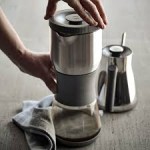 Since “old” is in this case a euphemism for “stale” I feel it’s a good time to share what I know or at least think about freshness and its successor, staleness. I’d also like to address their recommendations in future articles, but let’s start with freshness and how to keep coffee from getting stale. Most supermarket coffee, even in bean form, is by industry standards, stale. That is, it has been two or more weeks since it was roasted. According to industry experts, coffee should kept in bean form until just before using, but even then, its peak flavor lasts roughly ten to fourteen days from roast.
Since “old” is in this case a euphemism for “stale” I feel it’s a good time to share what I know or at least think about freshness and its successor, staleness. I’d also like to address their recommendations in future articles, but let’s start with freshness and how to keep coffee from getting stale. Most supermarket coffee, even in bean form, is by industry standards, stale. That is, it has been two or more weeks since it was roasted. According to industry experts, coffee should kept in bean form until just before using, but even then, its peak flavor lasts roughly ten to fourteen days from roast.
For most of the large roasters and many consumers, this is a market impossibility. The supermarket distribution system alone makes it highly unlikely that much coffee is being purchased, let alone brewed within this time frame. One of the exceptions might be Peet’s, who in my observation, seems to lead the industry in its scrupulous overseeing its supermarket slots. My mother is a Peet’s fan, and I often pop into a mass supermarket chain to snare her beans. Peet’s scrupulously stamps roast dates on its packages, while many roasters succumb to supermarket pressure to post “best by” dates, which are definitely not the same. Some best-by dates euphemistically project a year of freshness. Careful packaging which includes nitrogen flushing to drive away oxygen and that little one-way valve added to the package work to help prolong freshness, but no one has ever claimed they “freeze” the staling process, although some of my industry friends claim they are pretty happy with the results. 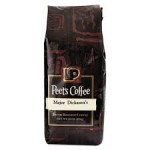
Speaking of freezing, the late roaster/inventor Michael Sivetz once told me his future vision of coffee being sold in the freezer section. Needless to say, this has not yet happened and many in the industry scoff at freezing beans. Nonetheless, I have done many anecdotal samplings using Sivetz’ recommendations and found freezing to be a no-brainer better solution compared to any alternate storage method past the two week window. The more I’ve sought to intermix my snooty connoisseur instincts with the solid practicality of a socially and fiscally responsible citizen, the more appealing freezing has become. Put in plain language, it can’t help the rain forest to have a bunch of coffee snobs tossing out three-week-old beans.
How can you tell if the beans you’re grinding are fresh? The most reliable indicator that is not entirely subjective is to grind and brew some coffee. If the beans still have what I’ll call “life” in them, they will foam up as you first pour hot water over the grounds, in either an automatic or manual coffee maker. This denotes the presence of carbon dioxide. I’ve seen roasters find some coffee laying around unmarked by a date on its package and brew a small batch. After they saw no foaming, they simply pronounced it “dead” and tossed it out.
Speaking of roasters, in my experience, most of my friends who roast are not ideal guides to dealing with preserving freshness or how to use stale coffee to its best advantage. Simply, it’s like asking a wine merchant how to best utilize cheap bottles of wine. Why on earth would they take home cheap bottles, when they have discount (free?) access to the best ones? Most roasters simply take home a small amount of today’s roasted coffee for tomorrow morning’s home brewing. They also likely pay little or nothing for them, so if there’s any question, they can afford to toss them out. So, you really need to find others like myself who are stuck with buyer’s remorse and stale beans on occasion and must learn to struggle to make them work, which is why Fellow’s post is so noble and why they just might know something. 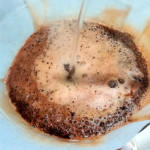
I have presupposed that most of our readers own a grinder and buy only beans. Frankly, pre-ground coffee is often the best ground coffee – that is, no matter which home grinder you own, it is unlikely to grind as authoritatively or meet specs as rigidly as does any commercially ground coffee from a major coffee company. In a perfect world (I can dream can’t I?) coffee would be pre-ground and packaged so perfectly as to figuratively freeze its attributes. From my subjective tastings, the most knowledgeable company in the world regarding packaging pre-ground coffee is Illy. They do a lot of R&D on packaging and if anyone could really claim to rival home ground fresh coffee with their pre-ground canned versions, I think it would be them. However, they really focus on a select market which is too limited to satisfy my appetite to drink coffee from various small farms around the world, which is the hobby of so many of us.
I hope to post more about this subject as I more thoroughly study and digest the Fellow article’s recommendations. Stay tuned.
Podcast: Play in new window | Download
Subscribe: Android | Email |
by Coffee Kevin | Sep 6, 2016 |
 I have always been intrigued by Café Grumpy. Never have I heard so many scary rumors of the tough love treatment of consumer electronics, coupled with praise for their beverages. Such media luminaries as Bruce Cost (creator of my favorite ginger ale) to HBO Girl’s Lina Dunham, where her character works as an uninspired barista on the show. I was so disheartened when Oren’s Daily Roast left Grand Central Station to reopen as a Starbucks. My enthusiasm returned when Starbucks left and Café Grumpy inherited the Grand Central location.
I have always been intrigued by Café Grumpy. Never have I heard so many scary rumors of the tough love treatment of consumer electronics, coupled with praise for their beverages. Such media luminaries as Bruce Cost (creator of my favorite ginger ale) to HBO Girl’s Lina Dunham, where her character works as an uninspired barista on the show. I was so disheartened when Oren’s Daily Roast left Grand Central Station to reopen as a Starbucks. My enthusiasm returned when Starbucks left and Café Grumpy inherited the Grand Central location.
Caroline Bell was on my Future of Coffee Panel at the New York CoffeeCon in 2015. I found her quiet but thoughtful and someone who waited patiently for her turn at the microphone but always added substance and reason to the discussion. So it was that I had to pester her to join me on this podcast, even though I know she’d obviously prefer painful dental procedures to being interviewed.
While visiting Grumpy’s roastery, I was impressed with the fact that they’d roasted so long with a tiny L12 Probat roaster, which sat unused next to a more recent and much larger Probat model. I want to point out the Grumpy’s is one of those roasters where the team concept is in full view. Liam Singer is the talented roastmaster and Cheryl Kingan their painstakingly careful green buyer. While much of the coffee world has taken to presenting a giant assortment of single-origins, Grumpy’s has the courage to keep the menu short and simple and savory.
Caroline told me her grandparents worked in radio. She has a beautiful voice, no doubt in part being a descendant of trained radio talent. Perhaps the most surprising part of our interview as when I asked her favorite brewing method and she said French press. Made me want to try her coffee in a press, which I did the moment I arrived home. My suspicion is that many roasters choose green and roast their coffees with a favorite brewer in mind.
Enjoy.
Podcast: Play in new window | Download
Subscribe: Android | Email |
by Coffee Kevin | Aug 19, 2016 |
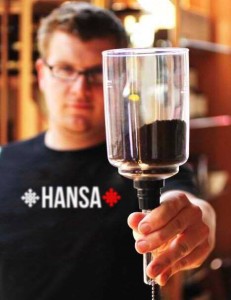 I met Tom at CoffeeCon Chicago 2015. He impressed me first with the coffee, then with his sense of humor. Finally, one day over a cup of coffee at his North Shore Hansa Coffee Libertyville location, he mentioned that he doesn’t brew using any gauges or scales. I saw his roaster. No Agtron roast meter. Now he’d piqued my curiosity.
I met Tom at CoffeeCon Chicago 2015. He impressed me first with the coffee, then with his sense of humor. Finally, one day over a cup of coffee at his North Shore Hansa Coffee Libertyville location, he mentioned that he doesn’t brew using any gauges or scales. I saw his roaster. No Agtron roast meter. Now he’d piqued my curiosity.
Hansa is also unusual in that it actively supports a post-traumatic stress effort for military veterans and has a mascot dog to send coffee to US troops overseas.
Tom’s an adherent of natural process coffees. I can’t know for certain if he’s right, but he sure thinks he is. What impressed me most about him is his willingness to go his own direction. In my opinion, there’s a lot of me-too collectivism in coffee that can lead to too much group think and not enough individual thought. This is not a problem for Tom, nor his business partner and Hansa’s c0-owner, Kevin Kane.
This is a long podcast. You may want to take a break midway, but Tom was very willing to share his views on many subjects and I know you’ll come away more knowledgeable from hearing from him.
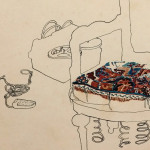
Podcast: Play in new window | Download
Subscribe: Android | Email |
by Coffee Kevin | Aug 12, 2016 |
 Since written word began the word has been a powerful catalyst in developing any culinary art. Just as Julia Child helped spawn a new era in home cooking, writers like wine’s Robert W Parker and coffee’s Kenneth Davids helped foster our quest for knowledge and appreciation of their respective beverages.
Since written word began the word has been a powerful catalyst in developing any culinary art. Just as Julia Child helped spawn a new era in home cooking, writers like wine’s Robert W Parker and coffee’s Kenneth Davids helped foster our quest for knowledge and appreciation of their respective beverages.
I’m interested in discovering who today is going to lead our next movement in coffee and Joseph is definitely one of those figures. His Coffee Lovers Magazine is bravely aimed at consumers. I say bravely because most of the press coffee gets is unapologetic in its pursuit of trade dollars, a by far easier chase but one with limited vision. I blame the industry more than the publishers, for this lack of collective vision, but it slows the growth of one of the most interesting of all culinary arts. My interview here is long. It is a true conversation so I won’t apologize for my talking as much as my guest. But, I hope you listen as Joseph is on a mission, and for this reason he’s a prophet. 
Podcast: Play in new window | Download
Subscribe: Android | Email |
by Coffee Kevin | Jul 27, 2016 |
 “Have a cold one!” How often do we receive this invitation? I have consumed around two or three beers in my entire lifetime. But, I’d have my eyes closed if I didn’t realize how popular beer has become, and how much it matches coffee’s complexity. My first taste of nitro beer was at last year’s Chicago CoffeeCon. Ipsento Coffee served samples. Although I had lots of coffee including other cold brews, this one had the foamy richness of a beer. It surprised me how creamy it was as well as how refreshing it tasted, all with no cream or added sweetener.
“Have a cold one!” How often do we receive this invitation? I have consumed around two or three beers in my entire lifetime. But, I’d have my eyes closed if I didn’t realize how popular beer has become, and how much it matches coffee’s complexity. My first taste of nitro beer was at last year’s Chicago CoffeeCon. Ipsento Coffee served samples. Although I had lots of coffee including other cold brews, this one had the foamy richness of a beer. It surprised me how creamy it was as well as how refreshing it tasted, all with no cream or added sweetener.
A month later and Fox Business asked me to appear on a Chew on This segment featuring an on-air tasting. Watching that afterwards I realized my mistake. Nitro coffee’s originator Mike McKim, of Cuvee Coffee scolded me. “Should’ve shaken the can more” he critiqued. I admit we were both pensive about shaking a carbonated can on-air, although it would have made the segment livelier – no doubt.
Flashback to Chicago. Tim Taylor and I finally got to meet. I brought along my audio gear to record Tim’s telling of his own nitro product, the same one I’d tasted on tap at CoffeeCon.
Here’s that interview for you now.
 Since “old” is in this case a euphemism for “stale” I feel it’s a good time to share what I know or at least think about freshness and its successor, staleness. I’d also like to address their recommendations in future articles, but let’s start with freshness and how to keep coffee from getting stale. Most supermarket coffee, even in bean form, is by industry standards, stale. That is, it has been two or more weeks since it was roasted. According to industry experts, coffee should kept in bean form until just before using, but even then, its peak flavor lasts roughly ten to fourteen days from roast.
Since “old” is in this case a euphemism for “stale” I feel it’s a good time to share what I know or at least think about freshness and its successor, staleness. I’d also like to address their recommendations in future articles, but let’s start with freshness and how to keep coffee from getting stale. Most supermarket coffee, even in bean form, is by industry standards, stale. That is, it has been two or more weeks since it was roasted. According to industry experts, coffee should kept in bean form until just before using, but even then, its peak flavor lasts roughly ten to fourteen days from roast.







